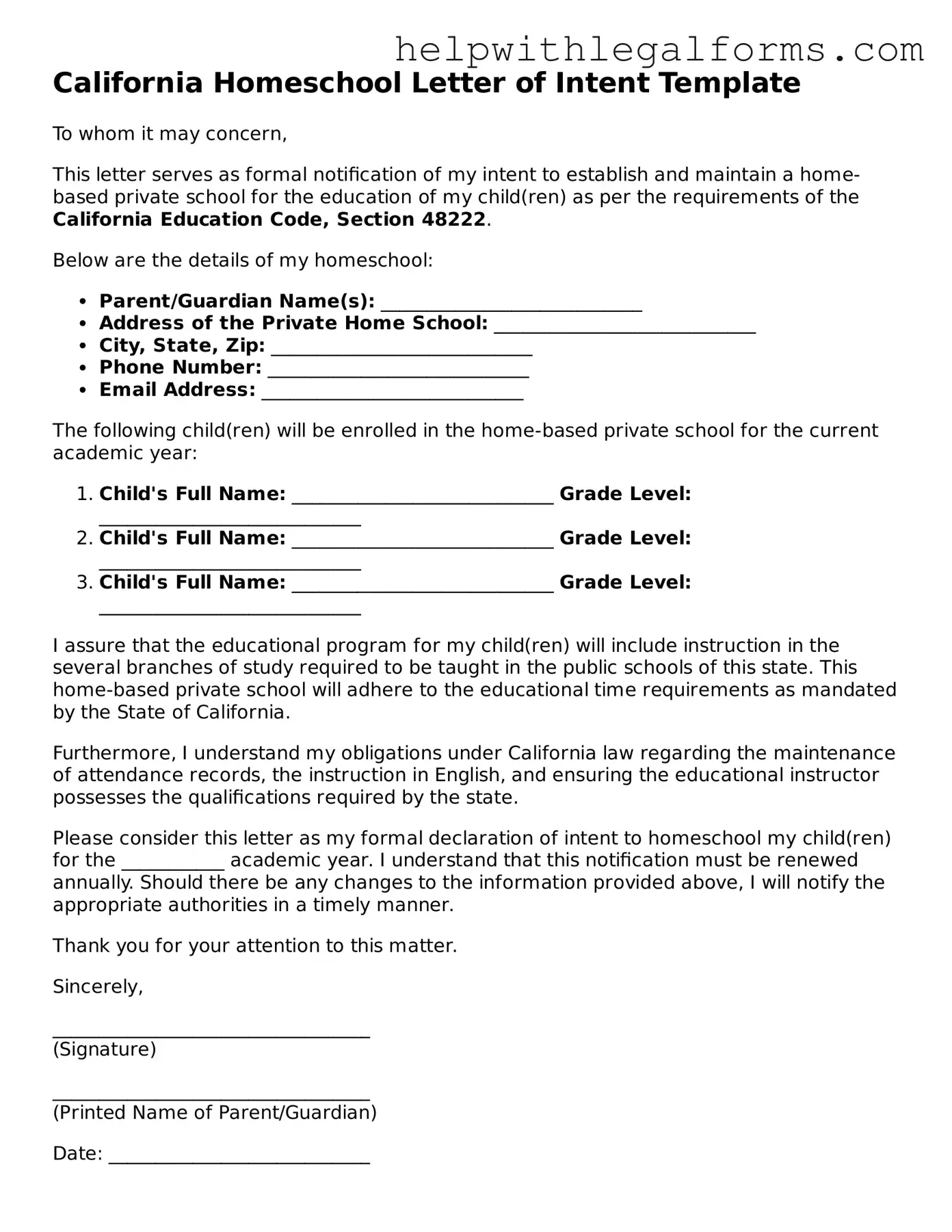What is the Homeschool Letter of Intent Form in California?
The Homeschool Letter of Intent Form in California is a document that parents or guardians must submit to the appropriate school district to notify them of their intent to homeschool their child. This is an essential step for legally homeschooling in the state, ensuring that the child's education complies with state educational guidelines while being conducted outside the traditional school system.
Who needs to file a Homeschool Letter of Intent in California?
Any parent or guardian planning to homeschool a child who would otherwise be enrolled in the public school system needs to file a Homeschool Letter of Intent. This applies to children aged 6 through 18, which is the compulsory education range in California.
When should I submit the Homeschool Letter of Intent?
The form should be submitted before beginning the homeschooling process and ideally at the start of the public school year in your district. However, if you decide to start homeschooling mid-year, submit the letter as soon as you make that decision to ensure compliance with California educational requirements.
Where do I submit the Homeschool Letter of Intent in California?
The Homeschool Letter of Intent should be submitted to the superintendent of your local school district. Each district may have different preferences for submission, such as mail, email, or in person. It's advisable to contact your local district’s office for specific submission guidelines.
What information is required in the Homeschool Letter of Intent?
The letter generally needs to include the child's full name, date of birth, home address, and the grade level they are entering. It should also include the parent or guardian's name and address, and a statement of intent to homeschool. Additional details or documentation requirements may vary by district.
Do I need to submit a Homeschool Letter of Intent every year?
Yes, in California, you must submit a Homeschool Letter of Intent annually. This yearly submission keeps the school district informed of your child's ongoing homeschool status and helps ensure compliance with the state's educational requirements.
Is there a deadline for submitting the Homeschool Letter of Intent?
While there isn't a strict statewide deadline, it's best practice to submit the letter at the beginning of the public school year or as soon as you decide to homeschool. Delaying the submission can lead to complications with the school district regarding your child's attendance records.
What happens after I submit the Homeschool Letter of Intent?
Upon submission, the local school district will acknowledge receipt of your Letter of Intent. This acknowledgment does not typically involve an approval process but serves as a form of record-keeping. After that, you may proceed with your homeschooling plan, keeping in mind to comply with California’s educational standards and requirements. It’s also important to maintain records and documentation of your child’s education progress in case of future inquiries or for re-entry into the public school system.
